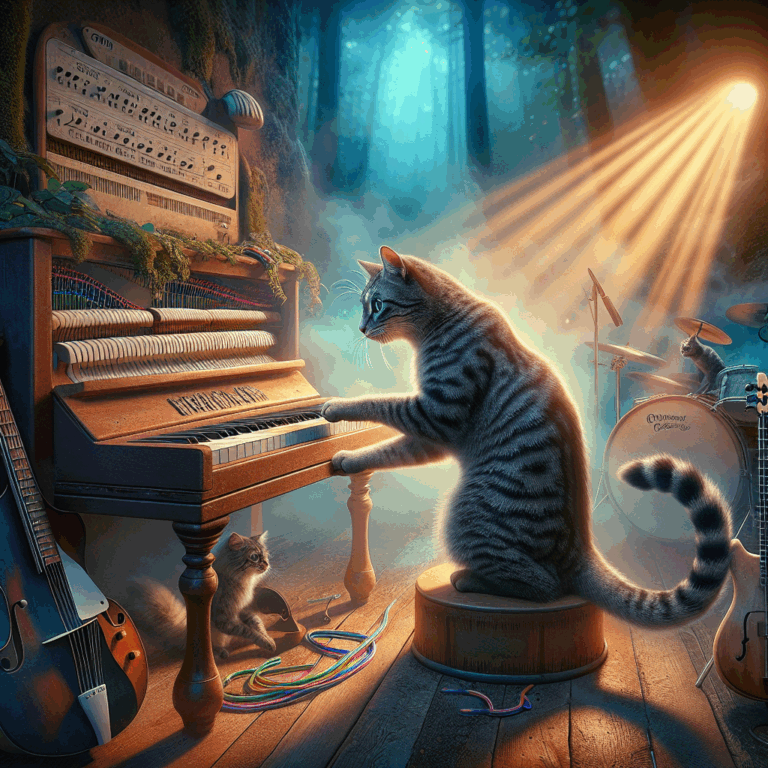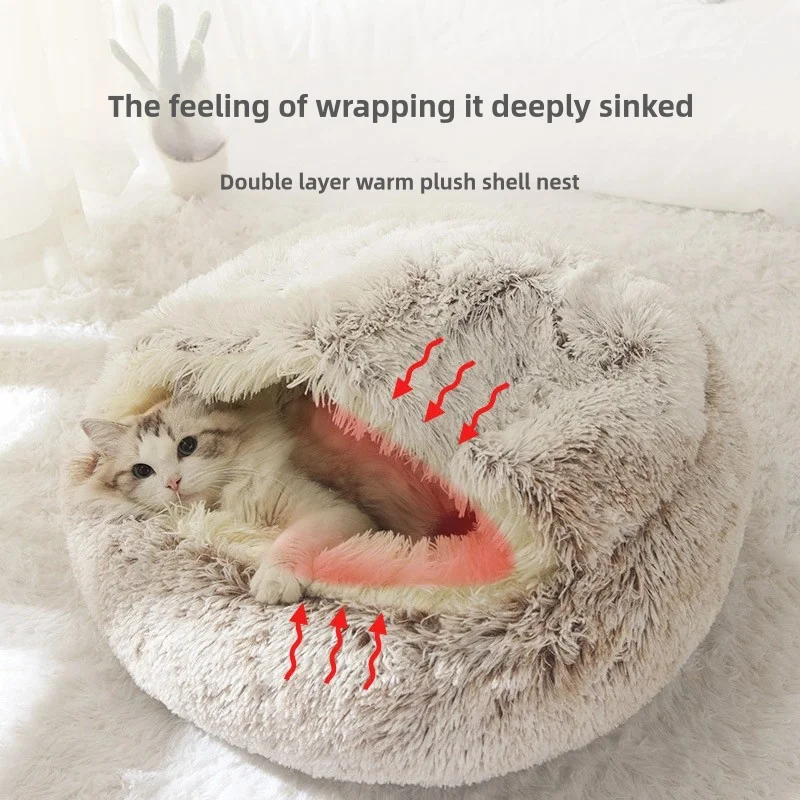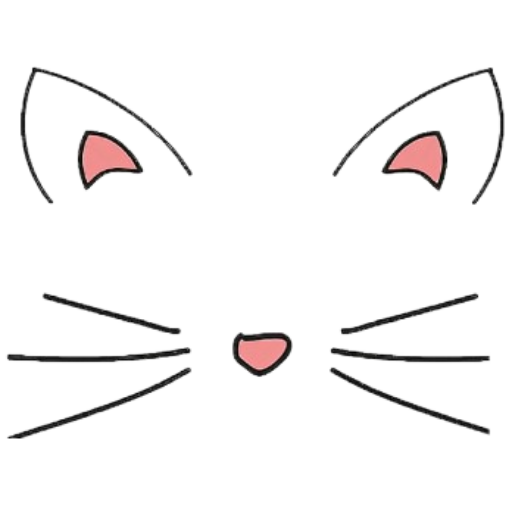The Feline Musicians: Cats and Their Influence on the World of Sound
- One Comment
In a world where music is a universal language that transcends borders, cultures, and even species, it is perhaps no surprise that cats, with their enigmatic charm and ethereal presence, have found their way into the hearts and minds of musicians throughout history. From inspiring compositions to becoming beloved mascots of musical movements, cats have undeniably left their paw prints on the world of sound in myriad ways.
The relationship between cats and music can be traced back to ancient times, with depictions of felines gracing the artwork of early civilizations known for their musical endeavors. In Ancient Egypt, where cats were revered almost as deities, it is believed that their presence in the home was thought to bring good fortune, including musically. The feline form was often associated with the goddess Bastet, who was also linked to music and the arts, suggesting an early connection between cats and musical expression.
Fast forward to the classical era, and we find numerous composers who were notably fond of their feline companions. Wolfgang Amadeus Mozart, for instance, is said to have had a cat that would walk across his keyboard during practice sessions, much to his amusement. While it may have seemed like a mere distraction, such playful interruptions could have sparked creative ideas, contributing to the maestro’s innovative compositions. Similarly, Maurice Ravel, renowned for his vibrant orchestration, was inspired by his Siamese cat, who he affectionately named Mouni. Ravel’s “Fugue in F Major” reportedly came to life as Mouni would lounge nearby, offering companionship and, perhaps, musical musings of his own.
In more contemporary times, cats have maintained their status as muses within the music industry. The iconic Freddie Mercury, frontman of the legendary rock band Queen, was known for his deep love of cats. He often dedicated songs to his feline friends, such as “Delilah,” a track on the band’s 1991 album “Innuendo,” which was a tribute to one of his beloved cats. Mercury’s affection for his pets was palpable, influencing not only his music but also his personal style and stage presence.
Moreover, cats have also played a role in shaping entire music genres. The jazz scene, with its improvisational flair and relaxed vibe, seemed a natural habitat for cats, leading to the term “cool cat” being coined to describe hip musicians. Jazz clubs and recording studios often had resident cats that provided both companionship and inspiration, becoming unofficial mascots of the genre. These feline friends, with their sleek movements and mysterious allure, seemed to embody the very essence of jazz itself.
In the digital age, the influence of cats on music has taken on a new dimension. The internet has become a breeding ground for viral cat videos featuring melodic meows and rhythmic purrs, capturing the hearts of millions and even inspiring remixes and musical compositions based on these feline sounds. The phenomenon of “cat music” has emerged as a unique subgenre, where artists experiment with incorporating the natural sounds of cats into their tracks, creating a fusion that is both innovative and whimsical.
Cats have also helped to foster a sense of community among musicians and music lovers. Online forums and social media groups dedicated to sharing cat-themed music and art have sprung up, allowing artists to connect over their shared passion for both music and their feline companions. This sense of camaraderie has led to collaborations and projects that celebrate the bond between humans and their beloved pets.
As we continue to explore the intricate relationship between cats and music, it becomes increasingly clear that these creatures have provided more than just companionship; they have inspired creativity, driven innovation, and even shaped the course of musical history. Whether as silent muses or active participants, cats have proven themselves to be invaluable contributors to the rich tapestry of sound that defines human culture.
In conclusion, the symbiotic relationship between cats and music is a testament to the enduring power of these enigmatic creatures to captivate and inspire. As musicians continue to draw inspiration from their feline friends, we can only anticipate the continued evolution of this unique partnership, one that promises to keep the world of music purring along for generations to come.

In a world where music is a universal language that transcends borders, cultures, and even species, it is perhaps no surprise that cats, with their enigmatic charm and ethereal presence, have found their way into the hearts and minds of musicians throughout history. From inspiring compositions to becoming beloved mascots of musical movements, cats have undeniably left their paw prints on the world of sound in myriad ways.
The relationship between cats and music can be traced back to ancient times, with depictions of felines gracing the artwork of early civilizations known for their musical endeavors. In Ancient Egypt, where cats were revered almost as deities, it is believed that their presence in the home was thought to bring good fortune, including musically. The feline form was often associated with the goddess Bastet, who was also linked to music and the arts, suggesting an early connection between cats and musical expression.
Fast forward to the classical era, and we find numerous composers who were notably fond of their feline companions. Wolfgang Amadeus Mozart, for instance, is said to have had a cat that would walk across his keyboard during practice sessions, much to his amusement. While it may have seemed like a mere distraction, such playful interruptions could have sparked creative ideas, contributing to the maestro’s innovative compositions. Similarly, Maurice Ravel, renowned for his vibrant orchestration, was inspired by his Siamese cat, who he affectionately named Mouni. Ravel’s “Fugue in F Major” reportedly came to life as Mouni would lounge nearby, offering companionship and, perhaps, musical musings of his own.
In more contemporary times, cats have maintained their status as muses within the music industry. The iconic Freddie Mercury, frontman of the legendary rock band Queen, was known for his deep love of cats. He often dedicated songs to his feline friends, such as “Delilah,” a track on the band’s 1991 album “Innuendo,” which was a tribute to one of his beloved cats. Mercury’s affection for his pets was palpable, influencing not only his music but also his personal style and stage presence.
Moreover, cats have also played a role in shaping entire music genres. The jazz scene, with its improvisational flair and relaxed vibe, seemed a natural habitat for cats, leading to the term “cool cat” being coined to describe hip musicians. Jazz clubs and recording studios often had resident cats that provided both companionship and inspiration, becoming unofficial mascots of the genre. These feline friends, with their sleek movements and mysterious allure, seemed to embody the very essence of jazz itself.
In the digital age, the influence of cats on music has taken on a new dimension. The internet has become a breeding ground for viral cat videos featuring melodic meows and rhythmic purrs, capturing the hearts of millions and even inspiring remixes and musical compositions based on these feline sounds. The phenomenon of “cat music” has emerged as a unique subgenre, where artists experiment with incorporating the natural sounds of cats into their tracks, creating a fusion that is both innovative and whimsical.
Cats have also helped to foster a sense of community among musicians and music lovers. Online forums and social media groups dedicated to sharing cat-themed music and art have sprung up, allowing artists to connect over their shared passion for both music and their feline companions. This sense of camaraderie has led to collaborations and projects that celebrate the bond between humans and their beloved pets.
As we continue to explore the intricate relationship between cats and music, it becomes increasingly clear that these creatures have provided more than just companionship; they have inspired creativity, driven innovation, and even shaped the course of musical history. Whether as silent muses or active participants, cats have proven themselves to be invaluable contributors to the rich tapestry of sound that defines human culture.
In conclusion, the symbiotic relationship between cats and music is a testament to the enduring power of these enigmatic creatures to captivate and inspire. As musicians continue to draw inspiration from their feline friends, we can only anticipate the continued evolution of this unique partnership, one that promises to keep the world of music purring along for generations to come.



1 thought on “The Feline Musicians: Cats and Their Influence on the World of Sound”
This post beautifully highlights the fascinating connection between cats and music, showcasing their inspiring influence throughout history.